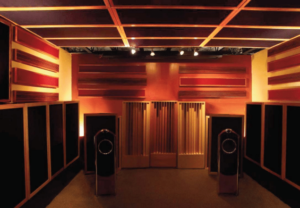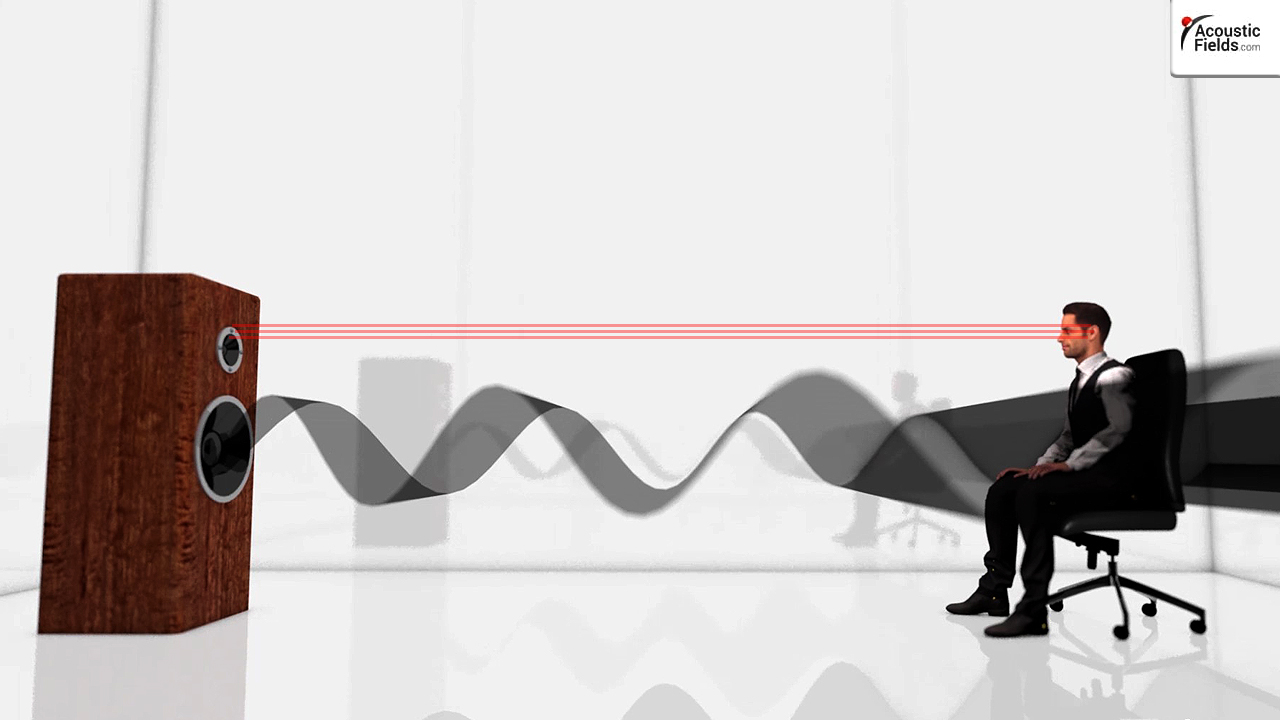Sound absorbing ceiling panels are a popular way to treat ceiling sound absorption needs in our rooms. In our rooms, we must be able to hear music and vocals. You need to have so much absorption and so much diffusion to bring the room into some acoustical balance for music and speech.
Placing sound absorbing ceiling panels on the room ceiling, can supply some of the total absorption coefficient needed within the room. Room usage has a lot to do with how much absorption to use in the ceiling and of what rate and level. How does one know how to choose the correct one that has the right rate and level of absorption for this particular room?
Sound Absorbing Ceiling Panels
We have all seen the standard, 2′ x 2′, press board type with white color, sound absorbing, ceiling panels. They are the 1/2″ thick ones that hang in the grids of our suspended ceilings. What are these things and how well do they work. They are very cheap per square foot and they have minimal absorption coefficients but there is a synergy that occurs where each piece of the sound absorbing panels is dropped in place and then covers the total ceiling area. So, even though each piece does not perform very well, together as a group they are a cost effective application in most commercial buildings.
Room Usage
The usage of the room is a critical factor to know at the beginning of the project. What is the room going to be used for. Will it be for music and vocals. Will the music and vocals have electronic sound reinforcement added to the sources of each vocal and instrument. What will be the average amount of people in the room at one time. What will be the average band or music group size. All of these factors will contribute to what type of sound absorbing ceiling panels you will select from. The thickness of the sound absorbing ceiling panels is the only variable that you can adjust for.
Thickness Determines Performance
To figure out how many and what thickness of a sound absorbing ceiling panels to get, you have to first determine what your actual acoustical absorption issues are and what is its number. You can measure the room and obtain the reverberation times within the room. Once you know the reverberation times and the intended room usage, you can now begin to figure out how many sound absorbing panels and how thick they should be. Think of all of the sound absorbing ceiling panels as miniature “sound sponges”. Each one by itself will not have much impact on the total amount of absorption needed in your room, but together they can most of the time by adding sound absorbing ceiling panels, you can lower the reverberation times within your room down to acceptable levels just using the ceiling as your work area.
Appearance And Performance
Acoustic Fields has sound absorbing ceiling panels that are not your typical ceiling tile. Each one of acoustic fields ceiling tiles has the ability to have 3 different thicknesses applied inside each unit. Based on your own individual room requirements and budget, you can cover less surface area with thicker foam and achieve the same results as covering the entire ceiling area. Fabric selection has over 50 different color and 10 different fabric options to pick from. There will be a color and texture of fabric to compliment any decor. Go here to check out our acoustic ceiling panels here.
Full Time Assistance
Along with the flexibility of choosing your own amount and level of absorption by varying the thickness of your Acoustic Fields sound absorbing ceiling panels, you can also have the product design team and engineers assist you with the correct installation methods and any technical issues. Acoustic Fields can even measure your room for you to make certain you are starting from the correct reverberation times and amount of material needed.
Call us directly at: 520 – 392 – 9486 MST or info@acousticfields.com.
Thanks and I look forward to helping solve your room acoustic issues shortly.
Mike








Hi,
What density do you advice for ceilingpanels between the diffusers in general in dedicated listeningrooms?
K, Use a 50 mm open-celled foam for the ceiling.